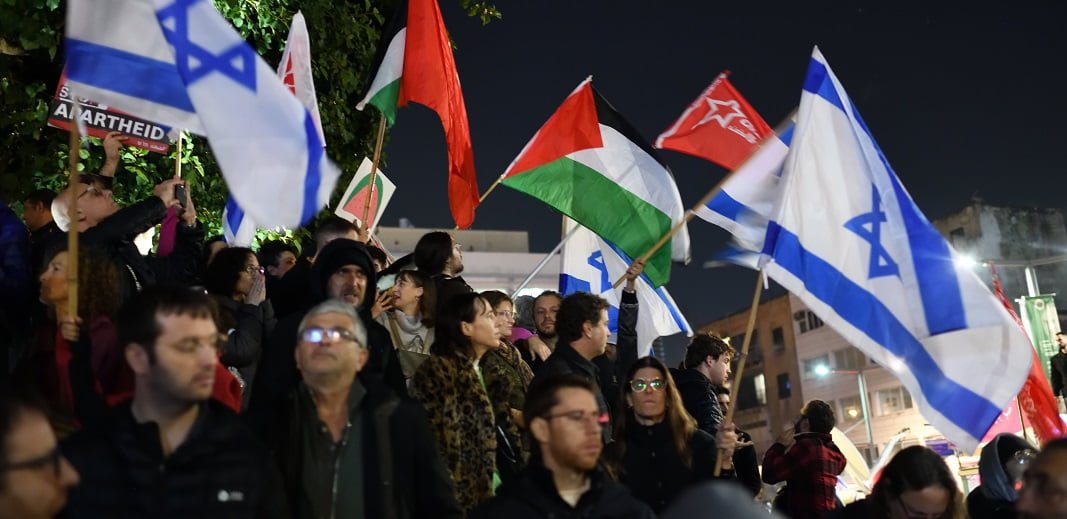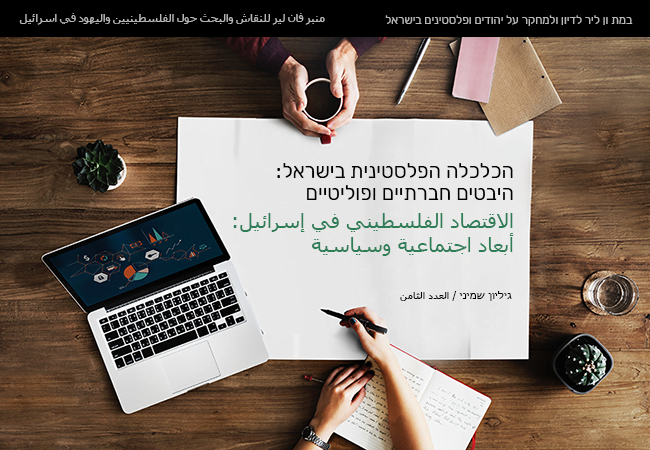The global experience of making peace in recent decades suggests that power-sharing democratic arrangements have become a central tool in conflict resolution. In contrast to majoritarian democracy, power-sharing arrangements are characterized by government of grand coalition, committed to the inclusion of the primary population groups; by proportional representation in various governing institutions; by group autonomy, mostly in culture-related fields; and by granting a minority veto that aim to secure essential interests of all participated communities. Instead leaning on majority-based politics that overrides the minority’ voice, power-sharing based politics relies on containment and compromise between its communities. In most cases, the reason for the adopting of this kind of system is pragmatic, however choosing it rests also on considerations of justice: advancing equality in power instead of relations characterized by the supremacy of one side, and interdependence instead of exploitation or dispossession. In Israel/Palestine, power-sharing arrangements can both be adopted as part of one bi-national state and in the framework of two states with a supra-national union. These two models are possible as a matter of principle, but in practice, a union of two states seems a preferable arrangement if only in light of the fact that the default of international law is that the political resolution here be based on two states, whereas any deviation from this framework requiring the agreement of both peoples.
Whether, in the framework of one or two states, what is the feasibility of this kind of power-sharing model, however worthy and desirable, being adopted in our reality, and lasting? How is it possible to transition to this kind of arrangement from the current regime, in which the supremacy of the Jewish population in all parts of the land and the ongoing dispossession of Palestinians are cornerstones of the Israeli governmental policies? Not surprisingly, Brandan O’Leary, a researcher who specializes in power-sharing arrangements, finds that the conditions required to facilitate power-sharing do not currently exist in Palestine/Israel.1Brendan O’Leary, “Power-Sharing and Partition amid Israel-Palestine,” Ethnopolitics 15, 4 (2016): 345-365. He points to the historical upheavals that resulted in the balance of power leaning so heavily in favor of Israel, in power being held exclusively by Jews, and in the Jews having vastly greater assets and income than the Palestinians. Another difficulty is that we do not have “internal” conditions to bridge the inequality gap and to support the establishment of a political partnership, as the national and cultural identity of the two sides is separate, unlike the shared German identity that led to the unification of East and West Germany. In addition, we lack a history of cooperation among elites between the two nations.
But even though the conditions that support the adoption of a formula for peace which based on partnership and equality do not currently exist in Israel/Palestine, the natural conclusion from this is not that this formula should be abandoned, but rather that in order to advance peace, we must act to remedy the current situation. Yet, unlike the cultivation of the conditions needed to realize the classic two-state vision, which based on demographic separation, advancing an equal-based political partnership does not entail causing new injustices and suffering. On the contrary, advancing the conditions for political partnership requires positive changes and corrections: reducing gaps, improving the economic, social and cultural welfare of all the residents of the land, and cultivating political, cultural and economic cooperation. In light of these goals, these are the critical questions: How may we imagine the transition from the current reality to a reality in which a Jewish-Palestinian political partnership is possible? And which policies need to be adopted, which processes need to be set in motion and which initiatives invested in, to cultivate conditions that will support an inclusive political model?
I would like to point to three types of processes that are desirable and appear also to be politically feasible.
The first is a reduction of social-economic gaps between Jews and Palestinians throughout the land between the river and the sea, and not only within the Green Line and in East Jerusalem, as has been done so far. This should also emphasize economic development and the provision of goods and public services. Since we share the same single (Israeli) economic realm, the main challenge lies in overcoming the mental and bureaucratic blocks created by the current regime, which is based on separations – between the Green Line, Jerusalem, the West Bank and Gaza.
The second is gaining and accumulating experience of fair cooperation between Palestinians and Israelis by creating the relevant institutional frameworks. Power-sharing requires the ability to debate and reach decisions together and therefore depends on familiarity and mutual trust, on developing common understandings and language, and on the existence of institutional frameworks that support this. These kinds of institutional processes and changes have already begun to take place within the space of Israeli citizenship, for example in various organizations of the civil society, in workplaces in the business sector and even in the public sector in Israel. In recent years these changes are occurring also in Jerusalem, as Michal Braier shows in her discussion of the emergent processes of urban planning in the neighborhood of Issawiya. It is important to learn from the accumulated experience and to utilize it in ways that serve the goal I have described here – namely, a movement not toward an “Israelization” of the Palestinians, but toward the creation of frameworks for fair cooperation among Israelis and Palestinians. The natural sites for this are those in which a certain degree of Israeli-Palestinian cooperation is already taking place and in which there are strong interests in favor of such cooperation or clear potential for significant gain – such as the environmental field, the fields of energy and water, the field of high-tech and the field of health. Similarly, in various other important fields – including higher education, tourism, transportation, agriculture and local politics – it is advisable to explore the possibility of creating fair and mutually beneficial cooperation.
The third process relates to culture and identity, and its aim is two-fold: to cultivate mutual recognition, shared identity and consciousness. Mutual recognition, a concept based on the phrase “parity of esteem”, used in the Northern Ireland peace process, means according respect to the cultural and national ethos of the other nationality. According respect does not entail accepting the other’s national perceptions as true. Positing this demand in situations of ethno-national conflicts will usually be inapplicable, since the national perceptions of the two sides most likely contradict each other. The demand for mutual respect is more modest, and at the same time revolutionary. Mutual respect means according respect to the cultural and national ethos of the other nationality and to the right of people to adhere to it and promote it in nonviolent ways. It is precisely the same right that we demand for ourselves and expect to receive from the other nation. Even if certain beliefs and perceptions will need to change, there is no requirement to forgo or abolish national difference to enable reconciliation. The aim is to achieve a relationship in which the two national ethoses can jointly co-exist. In this area, too, there is an emerging process underway among social leaders (see As’ad Ghanem’s and Meron Rapoport’s essays in this issue), in literature (see Mei-Tal Nadler), in historical writing (Menachem Klein, Hillel Cohen, Abigail Jacobson),2Menachem Klein, Kshurim: Hasipur Shel Bnei Ha’aretz (Connected: The Story of the Sons of the Land) [in Hebrew] (Tel Aviv: Hakibbutz Hameuchad), 2016; Lives in Common: Arabs and Jews in Jerusalem, Jaffa and Hebron, translated by Haim Watzman (New York: Oxford University Press, 2014); Hillel Cohen, 1929: Year Zero of the Arab-Israeli Conflict (Waltham, MA: Brandeis University Press, 2015); Hillel Cohen, Son’im Sipur Ahava (Enemies: A Love Story) [in Hebrew] (Tel Aviv: Ivrit, 2022); Abigail Jacobson and Moshe Naor, Oriental Neighbours: Middle Eastern Jews and Arabs in Mandatory Palestine (Waltham, MA: Brandeis University Press, 2016). and in civil society initiatives aimed at getting to know the narrative of the other side (The Parents Circle-Families Forum, Combatants for Peace, Zochrot).
The second pillar of the process relating to culture and identity is the cultivation of a shared, supra-national consciousness and identity (Ameer Fakhouri’s essay in this issue focuses on this pillar). Today there is a broad agreement among researchers of ethnicity and nationality that national identity, and even the kind that is grounded in a religious-ethnic identity, is the product of social-political processes driven by political leaders and national movements. Therefore, the suitable kind of cultural investment can contribute to the construction of an old-new identity that encompasses all those who belong to the shared land. Shared identity characteristics that were previously repressed can serve as a foundation for this inclusive cultural-political identity. Here, too, we can find the first signs of cultural initiatives that seek out the two people’s common denominator – in history, in their affiliation to the homeland, and in the religious roots – as opposed to the cultural processes that have thus far been cultivated by the Zionist and the Palestinian national movements, which strive to expose the divisive elements.
The starting point for a sustainable Zionist-Palestinian peace lies in acknowledging that we are destined to live here together, and in the understanding that the choice we have is not whether but how to live together. While it is true that the details have to be worked out with an awareness and sensitivity to the unique conditions of the Israeli-Palestinian predicament, the political principles are not unique to our particular case. They are founded on the recognition that co-existence must be based on a political framework of fair partnership between the two nations, a framework based on equality and non-domination. Turning this recognition into a reality requires broad and comprehensive processes aimed at changing the material and mental conditions so that they become suited to this political framework. Unlike creating the conditions for the classic two-state solution, which is based on separation, cultivating the conditions that support an Israeli-Palestinian union does not pose an ethical or legal problem. On the contrary, cultivating such conditions is supported by considerations of justice even regardless of any particular political model. In other words, the strength of the paradigm of partnership and equality lies both in the fact that it offers a feasible political formula and in the fact that the course of realizing it is one that is desirable and worthy.
- 1Brendan O’Leary, “Power-Sharing and Partition amid Israel-Palestine,” Ethnopolitics 15, 4 (2016): 345-365.
- 2Menachem Klein, Kshurim: Hasipur Shel Bnei Ha’aretz (Connected: The Story of the Sons of the Land) [in Hebrew] (Tel Aviv: Hakibbutz Hameuchad), 2016; Lives in Common: Arabs and Jews in Jerusalem, Jaffa and Hebron, translated by Haim Watzman (New York: Oxford University Press, 2014); Hillel Cohen, 1929: Year Zero of the Arab-Israeli Conflict (Waltham, MA: Brandeis University Press, 2015); Hillel Cohen, Son’im Sipur Ahava (Enemies: A Love Story) [in Hebrew] (Tel Aviv: Ivrit, 2022); Abigail Jacobson and Moshe Naor, Oriental Neighbours: Middle Eastern Jews and Arabs in Mandatory Palestine (Waltham, MA: Brandeis University Press, 2016).

















